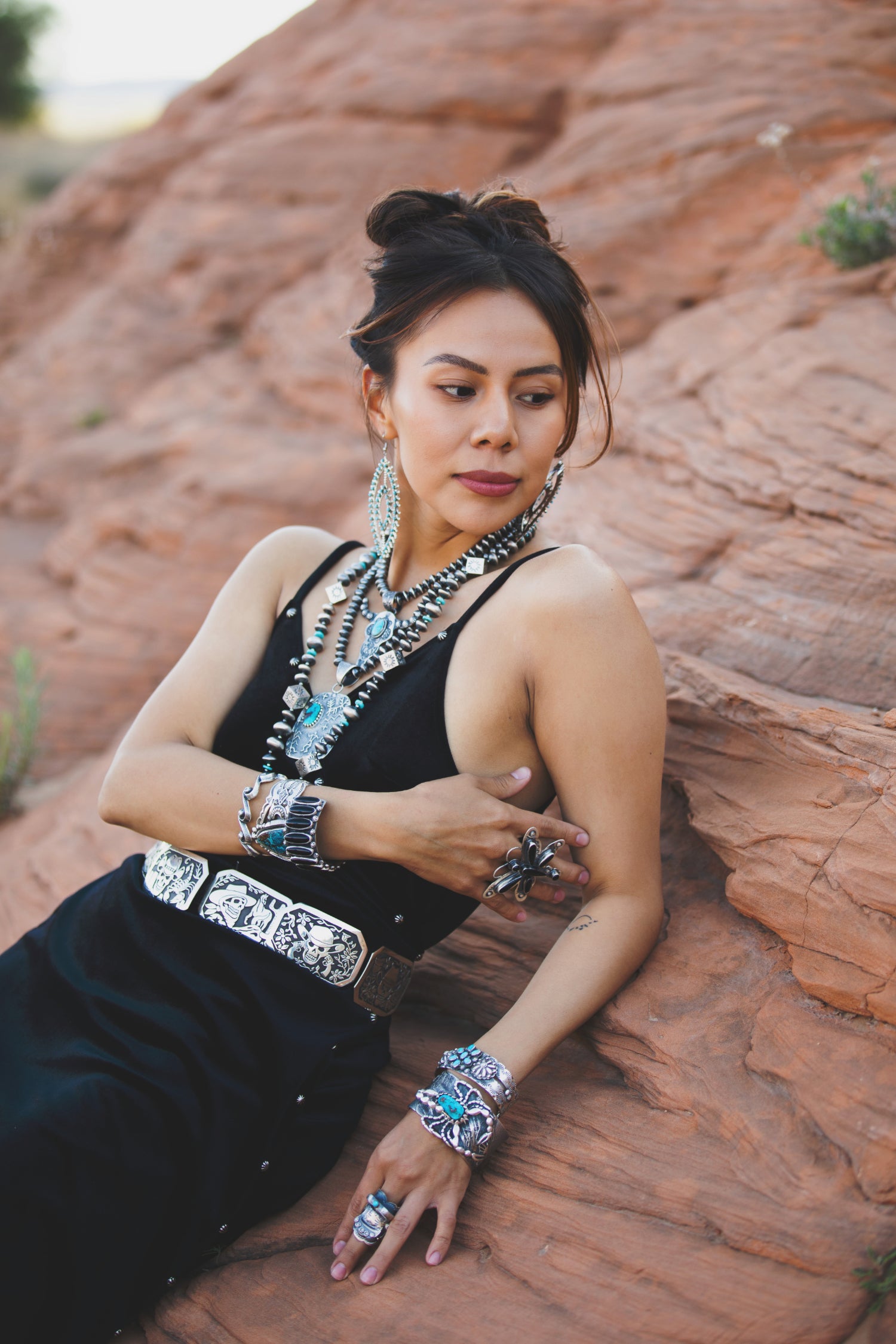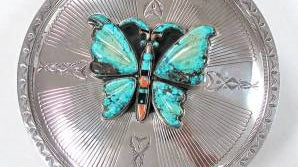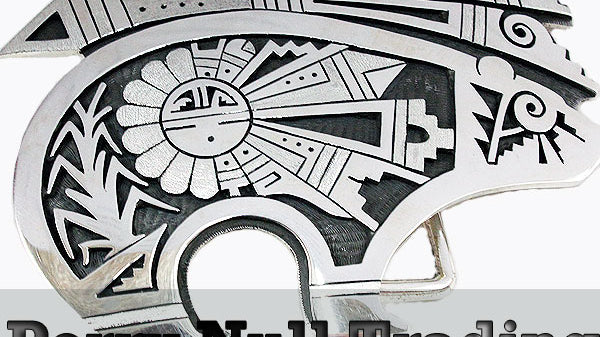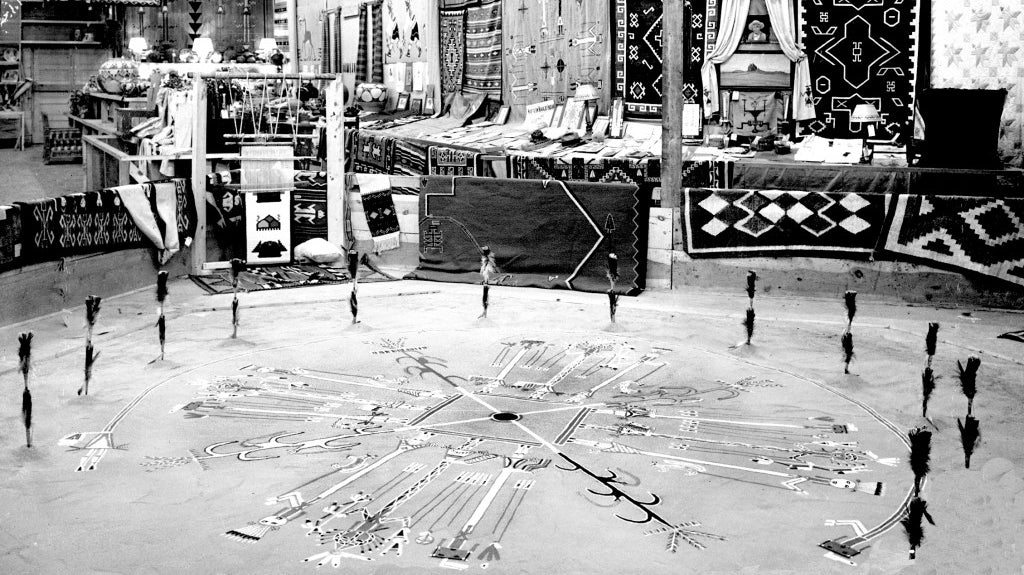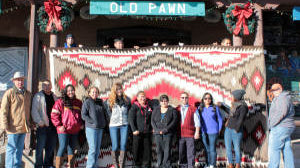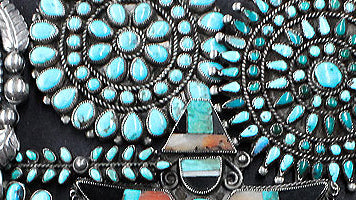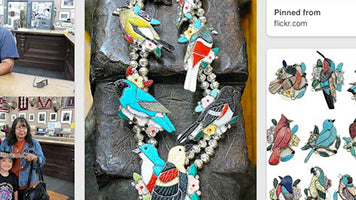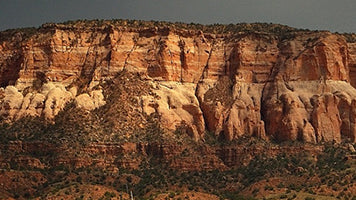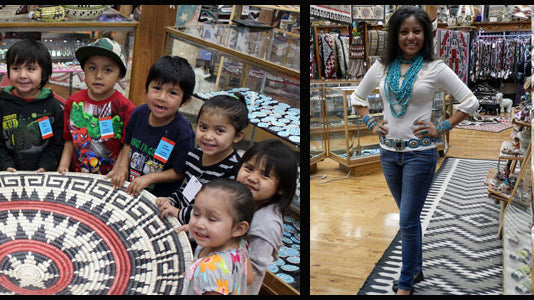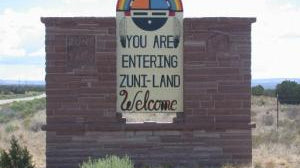Perry Null Trading
A Story of a Navajo Silversmith
It was the summer of 1949 in the high mountains of the Chuska range. A young Navajo boy sat on an upturned bucket, watching his grandfather melt silver coins in a clay crucible. The grandfather was teaching the six year old the art of jewelry making. The Navajo silversmith knelt on the earthen floor in front of his fire, melting the coins for a tufa cast bracelet; a jewelry process which involved carving out a pattern in tufa stone, lining the mold with a bit of sheep grease, then pouring the liquid silver in.
Leekya Deyuse Butterfly Box by Thomas Curtis Sr
78 years is a long time, it is pretty much the life expectancy for a US citizen. Navajo silver making is thought to have been around the last 160 years, two lives. Lots of things have happened between the mid 1800s and 2011. We have gone from the horse pulled wagon to our hybrid four-wheel drive SUVs, the telegraph to video chat, digging a hole outdoors to indoor plumbing, but turquoise and silver is still pretty much the same.
Cluster Jewelry
There are few styles of Native American jewelry as iconic and classic as the cluster style. Bold and almost mythical in proportion, cluster jewelry is a way to present more stone on a single bracelet or belt buckle than otherwise possible. The patterns are not particularly innovative, but the symmetry and characteristic array of gorgeous stone is as eye-catching as any other form of jewelry.
Difference Between Navajo and Hopi Sterling Silver Overlay Jewelry
The thought is the Navajo silversmith first learned his craft from a Mexican platero. Then the Navajo taught both the Zuni and Hopi to make jewelry. So, in the beginning the jewelry being made was heavily influenced by Navajo design. Eventually this would change and the Zuni and Hopi silversmiths would develop a different look from the Navajo. For the Hopi the style would become silver overlay that incorporated traditional motifs into the jewelry.
The Navajo Dine Tribe
In 1640 the Spaniard Coronado, with a small army which included women and hundreds of Indian allies from Mexico, moved into what is now New Mexico, where today's Navajo Dine Tribe flourishes, looking for the Zunis and their fabled Seven Cities of Gold. Nobody seemed to notice that there were only six cities occupied by the Zunis, but they did notice that there was almost no gold to be seen. A Plains Indian living at Pecos talked Coronado into traveling even further north and east to find his treasure. That didn’t work out too well for either of them.
Wholesale Native American Jewelry
Gallup, New Mexico is known as the Indian Capital of the World. It is here, high on the Colorado Plateau that you will find the most magnificent turquoise blues and deep coral reds. The town is dedicated to the handmade arts of the Navajo, Zuni and Hopi craftsmen.
Turquoise Jewelry - Buying Native American Art
The allure of the American southwest is legendary. Its brilliant blue skies, sweeping vistas, unique Native cultures and vermillion cliffs have drawn people for centuries. Yet among the land’s many captivating features one is universally acclaimed - Turquoise Jewelry.
Zuni Indian Jewelry
The Zunis have adapted as the economics of the world around them forced changes. When the making of silver ornaments was introduced in the middle of the Nineteenth Century, they were among the first to pick up the art. For a long time they turned out attractive belts, necklaces, buttons and armbands of silver. Until the turn of the century it was hard to tell Zuni Indian Jewelry from Navajo, and many “experts” feel that Zuni silver was traded from the Navajo. Zunis maintain, with some photographic evidence, that it was the other way around.
Zuni Tribe
The Zuni Tribe, like many other tribes, have a very complex creation tale which includes stories of the various clans during the migration phase, when they were all looking for the “middle place.” Groups travelled to the four cardinal directions and when they didn’t find what they were looking for, came back to the center. The group that went East found Idiwanna (the Middle Place) first, followed by the other wanderers in due time.
Your Connection to Native American Art and Culture
We know that you are a fan of Native American Art and Culture. That is what Perry Null Trading is all about. On our website you will find endless pictures of gorgeous art on our photo stream. We have many interviews from today's top Native American artists, and stories about the people and places around the Four Corners that help you understand this area. We run a forum where you can learn more about Native American art. And, of course we have a wide selection of authentic art that is ready for you to add to your collection.
Pueblo of Zuni, New Mexico
I do not know as much as I would like about the Zuni culture, but I do know many Zuni people. The one thing that always comes to mind when I think of the people of Zuni is their friendly, peaceful, and very welcoming personality. It has always been a gorgeous place to take company and enjoy the wonderful Zuni tamales, and Zuni has such a rich history that it becomes very easy to want to know as much as possible about this historic pueblo. Of course I could not take pictures of all the beautiful things to be photographed in the Pueblo of Zuni, New Mexico but hope you enjoy the pictures while taking a break from reading the story.

